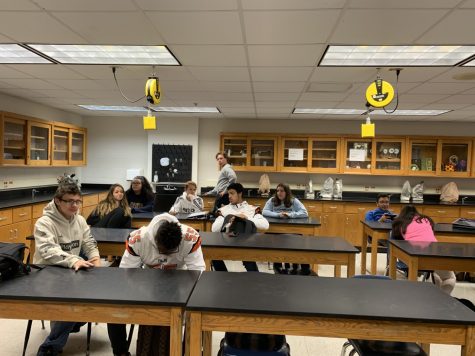Our Opinion: Mental Health Education

“Stressed Out Teens.” Millennial Marketing, www.millennialmarketing.com/2011/01/stressed-out-teens/.
November 3, 2018
Virginia has joined New York as one of the two states to pass legislation requiring more in depth mental health education for freshman and sophomore health classes. The goal is for adolescents to be able to identify and seek help if they start showing signs of depression or thoughts of suicide, the rates of which have risen dramatically in the last 10 years. Mental health education is crucial for kids and teenagers to learn at a younger age, as about half of these lifetime issues set in before age 14, but people will wait an average of 10 years before seeking treatment, the National Alliance on Mental Illness reports.
Depression is not the only topic to be covered in the curriculum – anxiety disorders and addiction are also part of the bill. Anxiety disorders affect around 32% of children aged 13-18, about 8% of whom say their disorder causes impairment of their everyday function. If there are kids and teenagers whose anxiety is so paralyzing that they are incapable of going to school, completing work, or developing natural social skills, that is a loss that will affect the rest of their life. Research shows that anxiety and depression disorders have a hand in causing substance abuse addictions, a serious problem among high school students. Prince William County already has a unit dedicated to drugs in both the 9th and 10th grade health classes but explaining the potential link between addiction and other mental health issues could help prevent abuse. Dedicating time to students and helping them realize that depression and anxiety can and should be dealt with in a way that is safe and healthy will help prevent further damage in the future from self-harm or substance abuse.
Many of these disorders are easily treatable, but there is a stigma against talking about mental health that needs to be broken down. A conversation must be had, and since suicide is the second highest cause of death for adolescents aged 15-19 after accidental injury, it is clearly a significant problem among teenagers. The fact that so many teenagers dealing with these issues are uncomfortable talking about it to the point that suicide seems to be the only option is a frighteningly bleak depiction of how mental illness is treated by society. That can change, and the stigma does not have to block a discussion that starts with comprehensive education.









